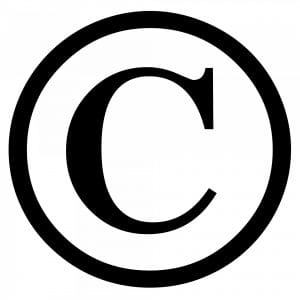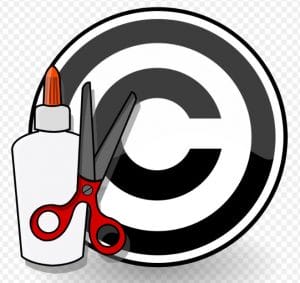Let’s Understand Copyright and Fair Use
Last week, I attended an online session by Advocate Anirudh Hariani to understand Copyright and its implications for a librarian in an education world.
What is copyright?
Here is the Copyright Handbook (India) which should not be replaced for the copyright rules and law. According to the copyright handbook of India, “Copyright is a right given by the law to creators of literary, dramatic, musical and artistic works and producers of cinematograph films and sound recordings. In fact, it is a bundle of rights including, inter alia, rights of reproduction, communication to the public, adaptation and translation of the work. There could be slight variations in the composition of the rights depending on the work.”
In short, the creator of any creative original works is the copyright owner of the works and he/she has certain rights over their creation.
What do creative original works mean?
In short, creative works include:
- Original literary, dramatic, musical and artistic works;
- Cinematograph films; and
- Sound recordings.
- Painting, a sculpture, a drawing (including a diagram, map, chart or plan), an engraving or a photograph, whether or not any such work possesses artistic quality;
- Work of architecture; and artistic craftsmanship.
How does information and knowledge in our society grow?
Society’s knowledge and growth take place on the creative works of others. What one scientist does, or an author writes, becomes an inspiration for others to create and help take the society forward.
Therefore, ideas need to be acknowledged, appreciated so that society can flourish. Therefore, creators like writers, artists and software programmers and others are acknowledged, appreciated and this is done by giving them the protection and ownership of his/her works through copyright.
What are the exclusive rights given to the creator of the original work?
What can the copyright owner do with the rights? The copyright laws give exclusive rights to the creator:
- To reproduce the work
- To issue copies of the work to the public
- To perform the work in public
- To communicate the work to the public.
- To make cinematograph film or sound recording in respect of the work
- To make any translation of the work
- To make any adaptation of the work.
And he/she has copyright rights for approximately his life span + 65 years (time span differs depending on the creative works). It protects the creator of the artistic work.
Strict application protecting the copyright may hamper economic and social development. So, therefore, the government has provided necessary exceptions and limitations to ensure a balance for the creators and growth of the community.
What are the exemptions?
Can we use works of authors without the permission of the owner of the copyright, and, if so, what are they? And How?
- We can use the copyright works
- For the purpose of research or private study
- For criticism or review
- For reporting current events
- In connection with a judicial proceeding
- Performance by an amateur club or society if the performance is given to a non-paying audience, and
- The making of sound recordings of literary, dramatic or musical works under certain conditions.
What about Education and Copyright?
Educators and schools use purchased copyrighted materials like textbooks and teacher resources to teach students. Points to know:
- India often refers to TRIPS – Article 13 and Berne Convention whereby people can use the creative works of others but must not unreasonably prejudice the interests of the copyright holder (author/creator)
- Fair Dealing must balance the rights of “Pool of Ideas” to create a robust and vibrant domain and not be an impediment to social growth.
- ‘‘Substantial’ Materials can be photocopied to support independent research and learning of school (however, we must be careful not to infringe on the interests of the copyright holder as far as possible.)
- The copied work must be transformative in nature.
For more information, check out this 1 hr explanation of the Vidhya Mitra Or the Recording of Copyright discussion with Advocate Anirudh Hariani
So, the question arises – what does ‘substantial’ amount mean? What does it mean by ‘unreasonable prejudice’? This varies on a case by case. For example, a jingle is a short phrase, if you use a substantial part? Will it be an infringement of the creator’s copyright or can we use a part of it under Fair Use? Therefore, it is necessary to understand infringement based on various criteria mentioned below.
What is Fair Use?
Fair Use is a part of copyright law that enables people to make legal use of copyrighted materials without payment or permission under some circumstances, especially for uses related to broad and important social goals to the development of innovation and spread of knowledge including teaching and learning, news reporting, scholarship, criticism and commentary
4 factors that determine or tell you that you are using the copyright materials under Fair Use Guideline
- Check – Purpose of the use
- Check – Nature of the copyrighted work
- Check – The amount and substantiality of the portion
- Check – Whether it affects the market for the original?
What about educators/librarians in the Education Space?
Technology has made is very easy for us to copy & paste from the Internet and so what is my job as an educator and/or librarian
What is my responsibility as an educator? As an educator, I need to:
- Learn the facts about copyright
- When in doubt, get permission
- Demonstrate respect for copyright material
- Learn about Fair Use
- Demonstrate use of Fair Use by evaluating and thinking critically
- Understand the Creative Common Licenses
Individuals/educators have 4 choices when using copyrighted material (texts and images)
- Pay a license fee (Ask permission)
- Claim fair use ( Just use it – analyse it under the 4 criteria)
- Select public domain or royalty-free or creative commons licensed content
- Don’t use it
Please know that everything is written or online is copyrighted. attached to all work. Even if the sign does not exist – it is still copyrighted.
What does it mean to our Students:
- Students will learn and need to respect the work of others by paraphrasing and not copy & paste
- Students will acknowledge the works of others and learn to cite their sources using citation tools like easybib.com or citation machine
- Young students in the primary section could at least cite the title and author of the book, magazine and/or websites and develop the habit of making references
You may use this Common Sense Media – Copyright and Fair Use video to teach students about Copyright & Fair Use.
There are many Open Education Projects that support open education. They are:
- Project Gutenberg
- Khan Academy
- Moocs – Coursera, Udacity, Edex, Open Up Ed…
- Creative Commons
- And other Open Education Resource list
Understanding Fair Use and Infringement may be unclear. Using for educational purposes does not necessarily make a use fair. Nor does using a portion of a copyrighted work for commercial purposes make it unfair.
Therefore THINK and ASK? – Is it TRANSFORMATIVE?
Frequently asked questions about Copyright & Fair Use?
Q1. Can I take information and ideas from the internet to create my lesson plans and do I need to cite it all the time?
Answer: Yes, you can take ideas and information to create lesson plans. You do not have to cite it all the time. You are creating the lesson plans under the fair use guidelines for education, and not for personal gain, and the purpose is to educate students, you can use them as lesson plans.
Q2. Can I take information and ideas from the internet and create my own book and sell?
Answer: Yes, you can take information but you will need to cite your sources. Your new work must be transformative in nature and can exist without impediment to the sale of your source. It needs to be different. However, you can add hyperlinks to other known sites and information to your work.
Q3. Can I circulate pdfs of books like Magic Tree House, Two States, Meluha, Tinkle magazines, Amar Chitra Katha, books by Enid Blyton etc for educational purposes?
Answer: No, you cannot circulate these books which are copyrighted, even if it’s for educational purposes because it directly affects the sale and market of the creator. You may circulate books that are in the public domain and available directly by the publishers or authors?
Q4. How do I know that the information is free to use on the Internet?
Answer: You will need to look at the licenses of the author/illustrator/photographers provided by them. You will need to learn about Creative Common Licenses.
Q5. When can I teach students about fair use and copyright?
Ans: You can teach students about fair use and copyright, right from Kindergarten choosing appropriate examples and opportunities especially when they are doing projects. For example, KG and Std 1 students can show and tell where they got the information from – whether it is a book, from people or from the internet. As they move into the upper primary section, they can write the title of the book, write the website name and finally move them into citing their sources appropriately. And, most important is that students will need to paraphrase and share their views and opinions based on her/his research.
Q6. Can I use an image from the internet under the Educational Fair Use Guidelines?
Answer: 1. As an ethical user of information, it is necessary for you and the students to use images from stock photos, Google images — after you have used the filter for copyright-free images, Pic4Learning Creative Commons Search.
2. Playing ignorant and using copyright images under fair use guidelines, is not being ethical.
Q7. I want to use a copyrighted image or text – Could I still use it?
Answer: Yes, you can use it however, you will need to justify the use under these guidelines:
- Am I using it for educational purposes?
- Ask what license is the present work that you are taking
- How much are you taking – all or some?
- Does it have an impact on the market value of the original?
- Have I repurposed the work?
The concept of copyright in Education is a moral and ethical matter. As an ethical educator, it is necessary, especially when the educator is showcasing, or running a professional discussion, or sharing learning and teaching in the public space outside the classroom it is a good practice to cite the references, thus adding credibility to your work while acknowledging the work of others
Works Cited:
Code of Best Practices in Fair Use for Media Literacy Education. Media Education Lab, Center for Social Media, 2008.
“A Handbook of Copyright Law.” Hand Book of Copyright Law, Government of India Department For Promotion of Industry and Internal Trade Ministry of Commerce and Industry, copyright.gov.in/Documents/handbook.html.
Hobbs, Renee, and Donna E. Alvermann. Copyright Clarity: How Fair Use Supports Digital Learning. Corwin, 2010.

